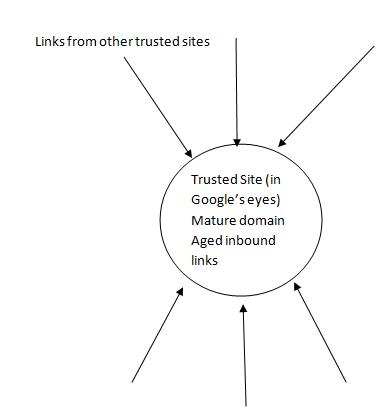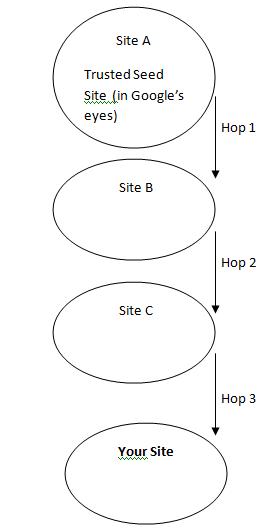Key Factors To Include In Competitive Analysis
As a site owner, you would be analyzing the Google SERPs (Search Engine Result Pages) frequently to see the sites ranking on Page 1 for terms that are of particular interest to your business or niche. Today it is vital to rank in the top 5 results on the first page to get the lion’s share of user clicks (approximately 70%).
Ranking below the fold on page 1 or on succeeding pages is not going to help your site’s cause in gaining better visibility and hence more traffic. The key factors you have to consider when doing a competitive analysis to dethrone a site ranking in the top 5 results and get your site listed in its place is what constitutes the meat of this post.
Broadly speaking, there are two sets of metrics to consider when doing competitive analysis namely the Domain and Page metrics. We will consider each of them in detail. For a change, I will try to make it as pictorial as possible (where applicable) and include my observations under Note (where applicable).
Also, some of the tools mentioned herein are proprietary and owned by SEOmoz. A PRO membership is necessary in most cases to see the values of metrics mentioned in this post. I will mention this where necessary. Screenshots showing link and domain figures are that of Natural search blog site.
A) Domain Metrics For Competitive Analysis:
NOTE:
In general, the site: command shows the virtual real estate your site owns on the web. More specifically, it shows the number of pages from your site that have been included in the Google index. You can use the same command on Yahoo and Bing as well.
NOTE:
The DmR measure indicates how important your domain is in the entire search engine index amongst all the other domains. The values are logarithmic and increase from 0 to 10.
A value of 5+ or 6+ is relatively competitive to beat. A value of 7+ or 8+ indicates a very powerful domain. Lower values mean you can take them on and try to dislodge them from the top.
NOTE:
DmT or Domain moz Trust indicates the trustworthiness of a site and the number of links it has earned from other well trusted sites.
All search engines have a core group of trusted seed sites as a starting point. The trustworthiness of your site can be measured by the hops or distance it is away from the trusted seed site. For more information, refer to my earlier post titled Relationship between trust and link building
4) Number of links to a given domain:

NOTE:
This is a measure of inbound links to your entire site. You can use the above tools to get an idea of how many links your domain has garnered and compare it with your competitor.
NOTE:
You can use Linkscape to identify the number of domains linking to your site.
The more diverse the domain set linking to your site, the more it will help your site reach the top. If you have 1000 links from 100 domains, this is a classic example of a sitewide link increasing the link count. If you have 500 links from 300 domains, your domain diversity measure is significant.
B) Page Metrics For Competitive Analysis:
Here we look at metrics that influence the specific page of a site.
NOTE:
The Page Rank in the Google Toolbar is a logarithmic value. A Page rank value encompasses a lot of things apart from just links going in and out of the site. It also includes several other factors that are domain and page specific.
The mR or mozRank is its equivalent in Linkscape. A Page rank of 5+ or 6+ is relatively competitive. A PR of 7+ or 8+ indicates a powerful site.
It is 10 times harder (in terms of time ($) and effort) to elevate the Pagerank value from one level to the next succeeding level.
2) Kewyord Targeting:
Basic on page factors like Keyword present in the title tag, URL and h# tags on the page and body copy
In my honest opinion, on page factors constitute 30 to 35% of efforrts in helping a certain page rank at the top of the SERPs.
If the niche your site is in is very special with not much competition, then on page factors will make the cut. Else, majority of the action lies external to your site.
3) mR or mozRank:
This is a Linkscape metric. This was discussed earlier as being similar to Page Rank.
A mR of 0 or unranked value should alert you to other issues like whether the link juice from your home page flows to the page in question. It raises questions about the location of the page in your site hierarchy.
Nowadays, each page of a site must have a certain pagerank threshold to retain their place in the Google index. Pages that do not have enough pagerank can be attributed to lack of content focus and quality of the page, lack of inbound links to the page etc.
Another problem is that Google updates its Page Rank toolbar once in a while and you cannot depend on it. Linkscape crawls the web atleast once a month and updates the mR value regularly.
Boosting your site pages through internal links alone will not help. It has to be reinforced by links from external unbiased sites to your site pages as well.
NOTE:
This is a measure of how trusted the page in question is in the eyes of Google. Links from other trustworthy sites to this particular page can certainly help increase its trust.
5) Number of links pointing to the page:
This is the number of links pointing to the page in question can be found out using tools like
Yahoo Site Explorer and
Linkscape
If links obtained are from a diverse set of domains, then it is valuable. So saying, it is agian unrealistic to expect only sites related to your industry to link to you. As a site owner, you have no control over who links to you.
Over the years, I have found that an inner page of a site that ranks well on the SERPs for a particular search phrase is more enduring and harder to dislodge from the top than a site whose home page ranks for the same term.
6) Number of linking domains:
Again, these are the links from various domains pointing to your site. A high domain diversity is a key factor to reach the search engine SERPs summit.
Links are powerful signals in the ranking process. It is not possible for a site owner to manipulate incoming links especially those from quality sites.
Domain diversity also cannot be manipulated easily. The number of inbound links from a diverse set of domains can help a site in even the most competitive industry break the ranking deadlock and burst into the top page of the SERPs.
7) Anchor Text of inbound links:
![]()
NOTE:
These examples show the anchor text of inbound links to the Natural Search Blog site. The anchor text is the text that forms the clickable part of the link.
The anchor text in links should reflect subtle variations of the subject discussed on the page of your site. If all links have the same anchor text, it is more than a coinicidence and the search engines will smell a rat.
There is a belief that if you get an inbound link from a good external site and if you are not happy with it, you can write to the other webmaster or site owner asking her to change the anchor text to suit. This is fine.
But in my opinion, if the other person linking to your site defines the focus of your site’s page in her own words, then that is the natural reinforcement your page gets. You would be well off checking the focus of the page on your site. If it exhibits mixed focus, this will naturally lead to different people interpreting it the way they read it sometimes giving rise to unexpected anchor text.
If you still want to have a more animated representation of this post, it would be worth watching Rand’s presentation on Key Factors in Competitive Analysis
Ravi Venkatesan is a senior SEO consultant at Netconcepts, an Auckland search engine optimisation company that offers both seo and pay per click services to its clients in New Zealand and Australia.
Possible Related Posts
Posted by Ravi of Netconcepts Ltd. on 10/11/2009
Permalink | |  Print
| Trackback | Comments (0) | Comments RSS
Print
| Trackback | Comments (0) | Comments RSS
Filed under: Search Engine Optimization, SEO anchor text of inbound links, auckland search engine optimisation, competitive analysis factors, domain diversity, domain metrics, domain mozRank, domain size, domain trust, external links, keyword targeting, linking domains, mR or mozRank, mT or mozTrust, page metrics, PageRank, SEO






No comments for Key Factors To Include In Competitive Analysis
No comments yet.
Sorry, the comment form is closed at this time.